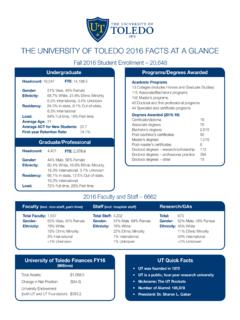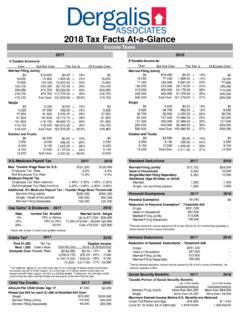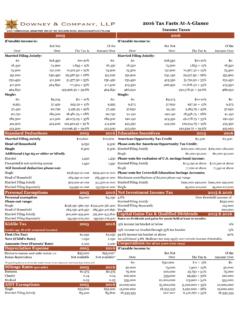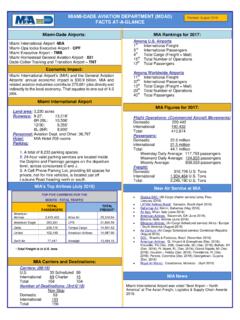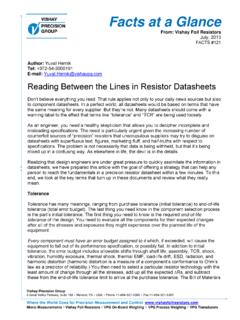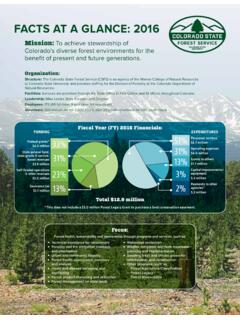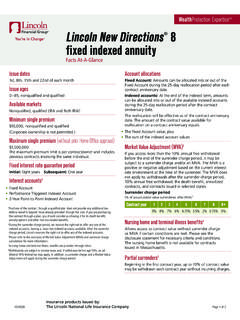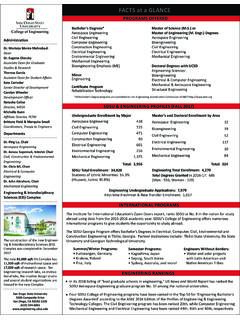Transcription of Heart Disease and Stroke Statistics 2018 At-a-Glance
1 Heart Disease and Stroke Statistics 2018 At-a-Glance Here are a few key Statistics about Heart Disease , Stroke , other cardiovascular diseases and their risk factors, in addition to commonly cited Statistics about the American Heart Association s research program. The source for the health Statistics is the Association s 2018 Heart Disease and Stroke Statistics Update, which is compiled annually by the American Heart Association, the Centers for Disease Control and Prevention, the National Institutes of Health and other government sources. The years cited are the most recent available for each statistical category.
2 The source for the research information is the Association s Science Operations Department. Key words included in the article: cardiovascular diseases; epidemiology; risk factors; Statistics ; Stroke American Heart Association Research The American Heart Association does not conduct research. Rather, the organization uses donations to fund research projects. Research applications are carefully weighed and selected by teams of scientists and healthcare professionals who volunteer for the association. The American Heart Association has funded 13 Nobel Prize winners and several important medical breakthroughs, including techniques and standards for CPR, the first artificial Heart valve, implantable pacemakers, cholesterol inhibitors, microsurgery and drug-coated stents.
3 The American Heart Association funds more research into cardiovascular diseases and Stroke than any organization except for the federal government. The American Heart Association has funded more than $4 billion in research since 1949. Heart Disease , Stroke and other Cardiovascular Diseases Cardiovascular Disease , listed as the underlying cause of death, accounts for nearly 836,546 deaths in the US. That s about 1 of every 3 deaths in the US. About 2,300 Americans die of cardiovascular Disease each day, an average of 1 death every 38 seconds. Cardiovascular diseases claim more lives each year than all forms of cancer and Chronic Lower Respiratory Disease combined.
4 About million American adults are living with some form of cardiovascular Disease or the after-effects of Stroke . Direct and indirect costs of total cardiovascular diseases and Stroke are estimated to total more than $ billion; that includes both health expenditures and lost productivity. Nearly half of all NH black adults have some form of cardiovascular Disease , percent of females and percent of males. Coronary Heart Disease is the leading cause ( percent) of deaths attributable to cardiovascular Disease in the US, followed by Stroke ( percent), Heart Failure ( percent), High Blood Pressure ( percent), diseases of the arteries ( percent), and other cardiovascular diseases ( percent).
5 Heart Disease accounts for 1 in 7 deaths in the US. Cardiovascular Disease is the leading global cause of death, accounting for more than million deaths per year in 2015, a number that is expected to grow to more than million by 2030. CVD and Stroke accounted for 14% of total health expenditures in 2013-2014. This is more than any major diagnostic group. Total direct medical costs of CVD are projected to increase to $749 billion in 2035. Heart Disease Heart Disease (including Coronary Heart Disease , Hypertension, and Stroke ) remains the No. 1 cause of death in the US.
6 Coronary Heart Disease accounts for 1 in 7 deaths in the US, killing over 366,800 people a year. The overall prevalence for MI in the US is about million, or 3 percent, in US adults. In 2015, Heart attacks claimed 114,023 lives in the US The estimated annual incidence of Heart attack in the US is 720,000 new attacks and 335,000 recurrent attacks. Average age at the first Heart attack is years for males and years for females. Approximately every 40 seconds, an American will have a Heart attack. From 2005 to 2015, the annual death rate attributable to coronary Heart Disease declined percent and the actual number of deaths declined but the burden and risk factors remain alarmingly high.
7 The estimated direct and indirect cost of Heart Disease in 2013 to 2014 (average annual) was $ billion. Heart attacks ($ billion) and Coronary Heart Disease ($ billion) were 2 of the 10 most expensive conditions treated in US hospitals in 2013. Between 2013 and 2030, medical costs of Coronary Heart Disease are projected to increase by about 100 percent. Stroke Someone in the US has a Stroke about once every 40 seconds. Stroke accounts for 1 of every 19 deaths in the US. Stroke kills someone in the US about every 3 minutes 45 seconds. When considered separately from other cardiovascular diseases, Stroke ranks No.
8 5 among all cause of death in the US, killing nearly 133,000 people a year. From 2005 to 2015, the age-adjusted Stroke death rate decreased percent, and the actual number of Stroke deaths declined percent. Each year, about 795,000 people experience a new or recurrent Stroke . Approximately 610,000 of these are first attacks, and 185,000 are recurrent attacks. Stroke is a leading cause of serious long-term disability in the US. In 2015, Stroke deaths accounted for of total deaths worldwide, making Stroke the second leading global cause of death behind Heart Disease .
9 Sudden Cardiac Arrest In 2015, any-mention sudden cardiac arrest mortality in the US was 366,807. The majority of Out of Hospital Cardiac Arrests (OHCA) occurs at public settings ( percent). In 2015, home or residence ( percent) and nursing homes ( percent) were the second and third most common locations of OHCA. Heart Disease , Stroke and Cardiovascular Disease Risk Factors The American Heart Association gauges the cardiovascular health of the nation by tracking seven key health factors and behaviors that increase risks for Heart Disease and Stroke . We call these Life s Simple 7 and we measure them to track progress toward our 2020 Impact Goal: to improve the cardiovascular health of all Americans by 20 percent and reduce deaths from cardiovascular diseases and Stroke by 20 percent, by the year 2020.
10 Life s Simple 7 are: not-smoking, physical activity, healthy diet, body weight, and control of cholesterol, blood pressure, and blood sugar. Here are some key facts related to these factors: Smoking Worldwide, tobacco smoking (including second-hand smoke) was 1 of the top 3 leading risk factors for Disease and contributed to an estimated million deaths in 2015. Tobacco use is the largest preventable cause of deaths in the US, killing >480,000 Americans per year. Of these, 41,000 were attributed to secondhand smoke exposure. In 2015, percent of adolescents aged 12 to 17 report being current smokers.
